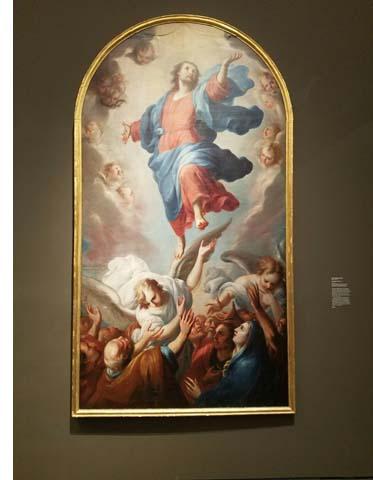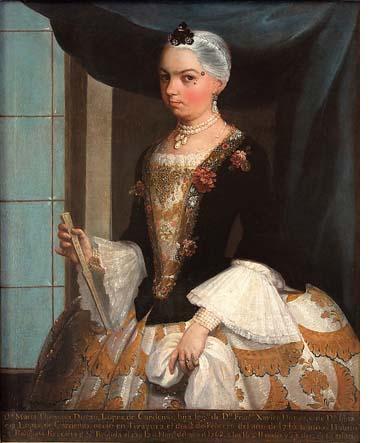Pinxit Mexici: The Art of New Spain
Painted in Mexico, 1700-1790: Pinxit Mexici, currently on view at The Met, brings a soul-stirring correction to myths that surround the extraordinary art of colonial Mexico. This show of more than 100 paintings, most of which have never been exhibited or published before, and half of which were restored specifically for this exhibition, was years in the making. Organized by Los Angeles County Museum of Art curator Ilona Katzew and three co-curators: Jaime Cuadriello and Paula Mues Orts in Mexico City and Luisa Elena Alcalá in Madrid, the show opened in Mexico City before showing at LACMA, and now in New York.
Following the Mexican revolution of 1910 and the ascendancy of the muralists Rivera, Siqueiros and Orozco, and the painter, Frida Kahlo, most of Mexico's art history was confined to Olmec and Folk Art. The formal, mostly religious paintings of the Academy of New Spain has, until now, been brushed off as being imitative of its European contemporaries, and not quite good enough to compete with Mexican art of the 20thcentury. Above: Miguel Cabrera, The Divine Spouse, ca 1750

But revelation abounds in this knock-out show, which opens with the visionary tour de force, Apotheosis of the Eucharist, 1723 by Juan Rodríguez Juárez (view). Measuring 13 feet high and 10 across, the drama of the scene that includes swirling devotional figures surrounding and supporting the image of the heavenly host held aloft by a choir of angels was designed to draw in the faithful as well as the doubters. A true spectacle even outside its architectural setting, it remains a draw for today’s museum-goers.
While the artists of New Spain, as the colony was called, were well aware of the art of the mother country through prints and books on architecture, they founded their own art academy in 1723 and went on to forge a style distinguished by its inventiveness and independence from trends. Take The Divine Spouse by Miguel Cabrera (above), painted for a convent around 1750. The artist depicts Jesus as a reclining pajama-clad flower child eyeing his subjects with a come-hither look—a pure invention far beyond any European model.Right: Juan Rodríguez Juárez, Ascension of Christ, 1720
Many of the paintings on view employ text, either for identification of the
artist, or to explain the complex allegories that unfold. In fact, the art industry of New Spain was so well organized, with academies, guilds and artistic rivalries that there was a busy trade in
exporting works to Spain. In the monumental Ascension of Christ (above right), painted in 1720 by Juan Rodríguez Juárez, Jesus is supported by a blond angel who
towers above the figures of the Virgin Mary, Saint Peter and the apostles below him. One of his wings bears the inscription, Joannes Rodrig. Xuarez inventor et pinx. Anno 1720—
invented and painted by Juan Rodríguez Juárez in the year 1720. The pride and accomplishment of Juárez, who came from a family of renown painters including his brother
Nicolás, perhaps comes from the knowledge that his art and that of his compatriots was uniquely apart from the contemporaneous European Baroque.

Painted in Mexico, 1700-1790: Pinxit Mexici continues through July 22 at The Metropolitan Museum of Art, 1000 Fifth Avenue, NY, NY Info The next gallery tour is June 6, at 10:30 am. Info 4AlexSim



